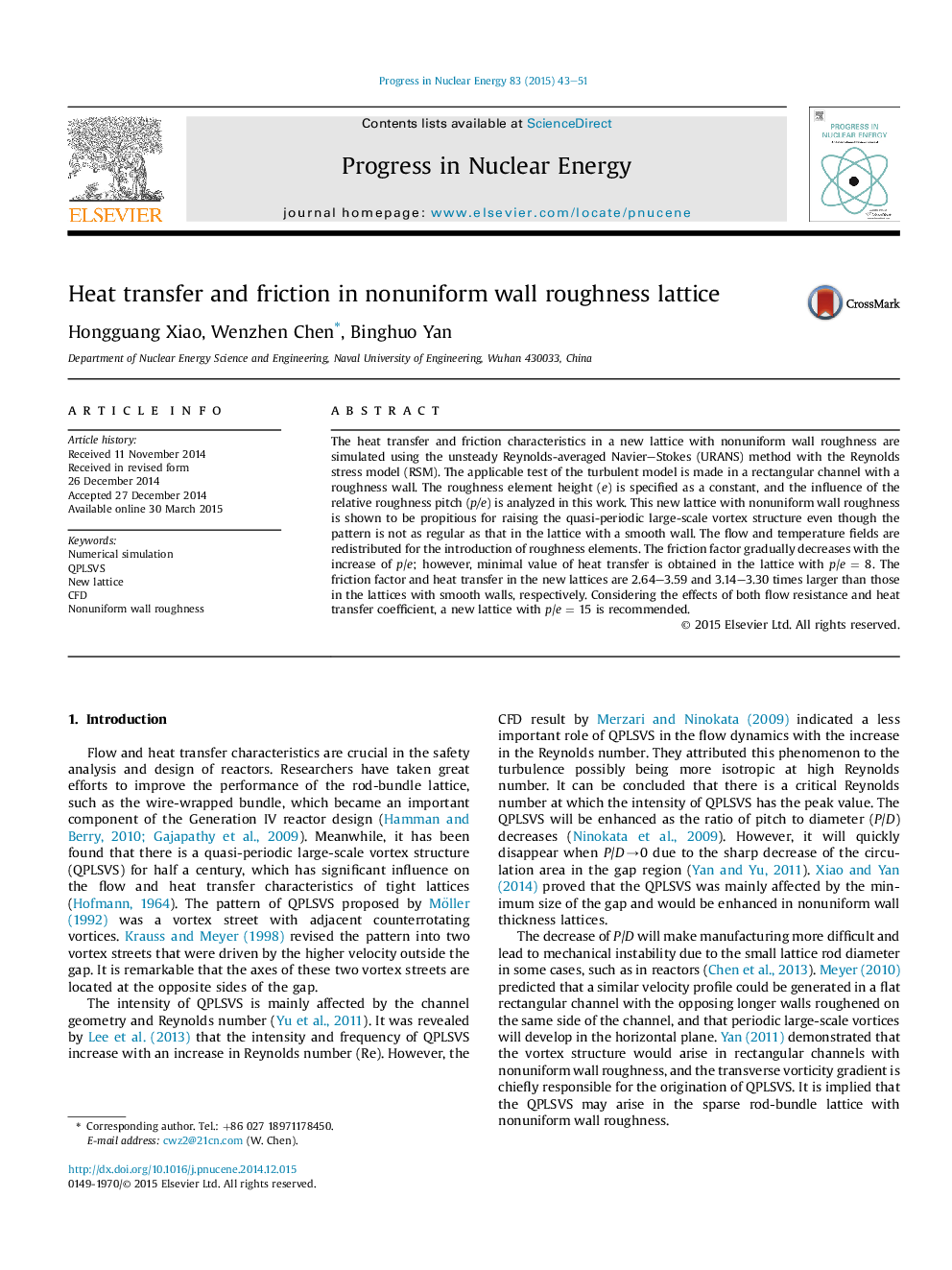| Article ID | Journal | Published Year | Pages | File Type |
|---|---|---|---|---|
| 1740439 | Progress in Nuclear Energy | 2015 | 9 Pages |
Abstract
The heat transfer and friction characteristics in a new lattice with nonuniform wall roughness are simulated using the unsteady Reynolds-averaged Navier-Stokes (URANS) method with the Reynolds stress model (RSM). The applicable test of the turbulent model is made in a rectangular channel with a roughness wall. The roughness element height (e) is specified as a constant, and the influence of the relative roughness pitch (p/e) is analyzed in this work. This new lattice with nonuniform wall roughness is shown to be propitious for raising the quasi-periodic large-scale vortex structure even though the pattern is not as regular as that in the lattice with a smooth wall. The flow and temperature fields are redistributed for the introduction of roughness elements. The friction factor gradually decreases with the increase of p/e; however, minimal value of heat transfer is obtained in the lattice with p/e = 8. The friction factor and heat transfer in the new lattices are 2.64-3.59 and 3.14-3.30 times larger than those in the lattices with smooth walls, respectively. Considering the effects of both flow resistance and heat transfer coefficient, a new lattice with p/e = 15 is recommended.
Keywords
Related Topics
Physical Sciences and Engineering
Energy
Energy Engineering and Power Technology
Authors
Hongguang Xiao, Wenzhen Chen, Binghuo Yan,
